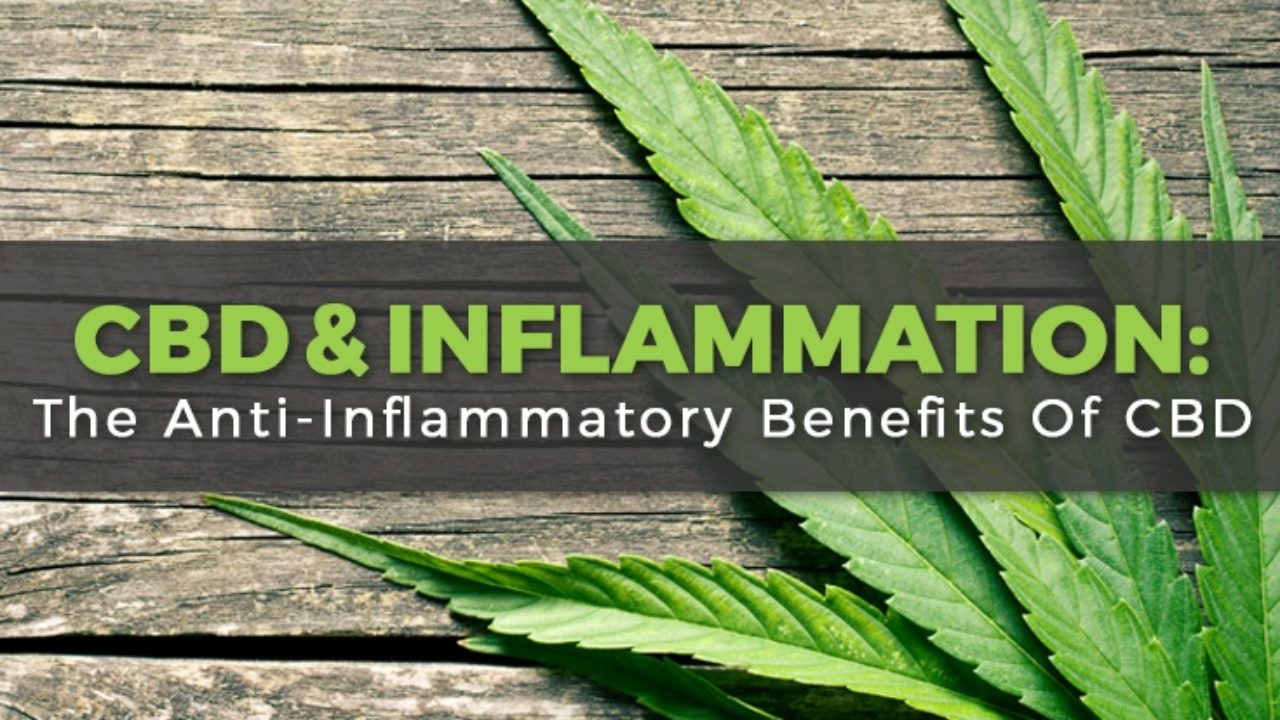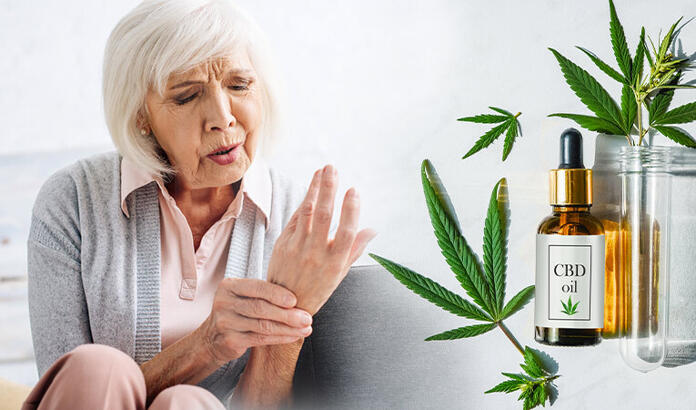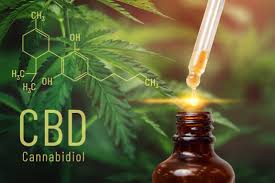Overview of CBD and its potential benefits for acne
Acne is a common skin condition that affects millions of people worldwide. From teenagers grappling with hormonal changes to adults dealing with stress-induced breakouts, acne can be a persistent and frustrating problem. While there are numerous treatments available on the market, their effectiveness can vary, and some may come with unwanted side effects.
Fortunately, there is a natural alternative that has been gaining recognition for its potential benefits in managing acne: CBD. Short for cannabidiol, CBD is a compound derived from the cannabis plant. However, unlike its psychoactive counterpart, THC, CBD does not induce a “high” and is known for its therapeutic properties.
In recent years, CBD has emerged as a promising option for acne treatment. Its anti-inflammatory and sebum-regulating effects have piqued the interest of researchers and skincare enthusiasts alike. By targeting the underlying causes of acne, CBD offers a holistic approach to skin health.
This comprehensive guide will delve into CBD and explore its potential benefits for acne. We will examine the causes and types of acne, the limitations of common treatments, and how CBD works to combat acne. Additionally, we will review scientific evidence and real-life testimonials to provide a well-rounded understanding of CBD’s efficacy.
Furthermore, we will discuss the different forms of CBD products available for topical use, recommended dosage and application methods, safety considerations, and potential side effects. Additionally, we will compare CBD with traditional acne treatments, weighing the pros and cons of each approach.
It’s important to note that while CBD shows promise in acne treatment, there are still limitations and gaps in our current knowledge. We will explore these limitations and discuss the legal status of CBD, potential regulatory issues, and any possible drug interactions or precautions.
By the end of this guide, you will have a comprehensive understanding of the potential benefits and considerations of using CBD for acne. Whether you’re new to CBD or already familiar with its many applications, this guide will be valuable in your journey toward healthier, clearer skin.
So, let’s embark on this exploration of CBD for acne and discover the possibilities that lie within this natural remedy.
Understanding Acne
Acne is a common skin condition that affects millions of people worldwide. It occurs when hair follicles become clogged with oil and dead skin cells, forming pimples, blackheads, and whiteheads. While acne is most commonly associated with adolescence, it can affect individuals of all ages.
Causes and Types of Acne
The exact cause of acne is multifactorial and can vary from person to person. Hormonal changes, particularly during puberty, play a significant role in the development of acne. Increased levels of androgens stimulate the production of sebum, an oily substance that can clog the pores and lead to acne breakouts.
Additionally, factors such as genetics, stress, diet, and certain medications can contribute to the development of acne. It is important to note that while diet and hygiene can influence acne to some extent, they are not the sole causes of the condition.
Acne can manifest in different forms, including:
- Comedones: These are non-inflammatory acne lesions that appear as clogged pores. They can be open (blackheads) or closed (whiteheads) and are often the first signs of acne.
- Inflammatory acne: This type of acne is characterized by red, swollen, and painful pimples or pustules. Inflammatory acne can be more severe and lead to nodules or cysts forming.
- Acne rosacea: Often mistaken for acne, rosacea is a chronic skin condition that causes redness, flushing, and small bumps on the face. It primarily affects adults and is commonly triggered by certain foods, alcohol, and sun exposure.
- Acne mechanica: This form of acne is caused by friction or pressure on the skin, usually from wearing tight clothing or sports equipment. It commonly affects athletes and individuals who wear tight-fitting helmets or straps.
Understanding the different types of acne is crucial in determining the most appropriate treatment approach.
Common Treatments and Their Limitations
Over the years, numerous treatments have been developed to manage acne, ranging from topical creams and gels to oral medications and procedures. Some of the common treatments include:
- Topical treatments: These include benzoyl peroxide, retinoids, and antibiotics. They work by reducing inflammation, unclogging pores, and inhibiting the growth of bacteria. However, they may cause skin dryness, redness, and irritation.
- Oral medications: Antibiotics, hormonal contraceptives, and isotretinoin are often prescribed for moderate to severe acne. While effective, they can have side effects and require close monitoring.
- Procedures: Dermatologists may recommend chemical peels, microdermabrasion, and laser therapy to treat acne. These procedures can help improve the appearance of acne scars and reduce inflammation, but they may not address the underlying causes of acne.
Despite the availability of these treatments, they are not without limitations. Some individuals may not respond well to certain treatments, while others may experience side effects that impact their quality of life. Additionally, acne treatments often require long-term use and may not provide permanent solutions.
Recently, there has been growing interest in CBD (cannabidiol) as a potential treatment option for acne. CBD is a non-psychoactive compound derived from the cannabis plant that has gained recognition for its various therapeutic properties. The next section will explore how CBD works for acne and its potential benefits.
How CBD Works for Acne
When understanding how CBD works for acne, one must first delve into the fascinating world of the endocannabinoid system. This intricate system throughout the body is crucial in regulating various physiological processes, including skin health.
The endocannabinoid system consists of receptors, enzymes, and endocannabinoids – naturally occurring compounds that bind to these receptors. One of the primary functions of this system is to maintain balance, or homeostasis, in the body. It helps regulate important processes such as pain perception, immune response, and skin health.
Let’s zoom in on the skin and explore how the endocannabinoid system influences acne. Acne, a common skin condition that affects millions of individuals worldwide, is primarily caused by factors such as excess sebum production, inflammation, and the proliferation of certain bacteria on the skin.
Research suggests that CBD, short for cannabidiol, may have potential anti-inflammatory properties that could help soothe acne-prone skin. Inflammation plays a significant role in the development and progression of acne, contributing to redness, swelling, and discomfort. By interacting with the endocannabinoid system, CBD may help calm the skin’s inflammatory response, reducing acne-related inflammation.
Furthermore, CBD has been found to have sebum-regulating effects. Sebum, an oily substance produced by the sebaceous glands, is important in maintaining skin hydration. However, excessive sebum production can contribute to clogged pores and the formation of acne. Preliminary studies suggest that CBD may help regulate sebum production, potentially reducing the occurrence of acne breakouts.
While the research on CBD for acne is still in its early stages, these initial findings are promising. However, it’s important to note that more studies are needed to fully understand the mechanisms behind CBD’s effects on acne and determine the optimal dosage and application methods.
The next section will explore the scientific evidence on CBD for acne, discussing relevant studies and research findings. Stay tuned to learn more about CBD’s potential benefits for acne and current knowledge’s limitations.
Next up: Scientific Evidence on CBD for Acne
Scientific Evidence on CBD for Acne
When exploring CBD’s potential benefits for acne, scientific evidence plays a crucial role in understanding its effectiveness. Numerous studies have been conducted to investigate CBD’s impact on acne and shed light on its mechanisms of action. This section provides an overview of relevant research findings and discusses the limitations and gaps in current knowledge.
Overview of Relevant Studies and Research Findings
Over the years, researchers have conducted various studies to evaluate the effects of CBD on acne-prone skin. One study published in the Journal of Clinical Investigation found that CBD can exert anti-inflammatory effects on the sebaceous glands, which produce sebum—a waxy, oily substance that can contribute to acne formation when overproduced. The study suggested that CBD has the potential to inhibit excessive sebum production, thus reducing the occurrence of acne breakouts.
Another study, published in the Journal of Dermatological Science, investigated the effects of CBD on human sebocytes—the cells that produce sebum. The researchers found that CBD can significantly reduce sebum production and exert anti-inflammatory effects on these cells. These findings further support the potential of CBD as a therapeutic option for acne.
Furthermore, a study published in the Experimental Dermatology Journal explored the endocannabinoid system’s role in regulating skin health and inflammation. The researchers highlighted the presence of cannabinoid receptors in the skin and their involvement in modulating various skin functions, including sebum production and inflammation. CBD, as a phytocannabinoid, can interact with these receptors, potentially regulating sebum production and reducing acne inflammation.
Discussion of the Limitations and Gaps in Current Knowledge
While the scientific evidence on CBD for acne is promising, it is important to acknowledge the limitations and gaps in current knowledge. Many of the studies conducted so far have been performed in vitro or on animal models, which may not fully reflect the complexities of human skin and the underlying causes of acne. Additionally, some studies have used synthetic cannabinoids or isolated CBD, which may not accurately represent the effects of whole-plant CBD extracts or other forms of CBD products.
Moreover, CBD treatment’s optimal dosage, formulation, and duration for acne have yet to be determined. There is a need for more well-designed clinical trials involving human participants to establish the efficacy and safety of CBD for acne. These studies should also consider factors such as individual variations in response, potential side effects, and long-term effects of CBD use for acne management.
Despite these limitations, the scientific evidence available thus far suggests that CBD has the potential to impact acne-prone skin positively. As research continues to unfold, staying updated on the latest findings and consulting healthcare professionals for personalized advice is essential.
Keep reading to discover different forms of CBD products for topical use, recommended dosage and application methods, safety considerations and possible side effects in the next sections of this comprehensive guide.
Click here to learn more about CBD and its various applications.
How to Use CBD for Acne
When it comes to using CBD for acne, a variety of forms can be used topically. Finding the right product for your skincare routine, from creams to serums, is essential. Understanding the recommended dosage and application methods, safety considerations, and possible side effects will help you make informed decisions about incorporating CBD into your acne treatment regimen.
Different forms of CBD products for topical use
CBD is available in various topical forms, each offering its unique benefits. One popular option is CBD creams, formulated to be applied directly to the affected areas of the skin. These creams often contain other beneficial ingredients like moisturizers and essential oils, providing a soothing and nourishing effect.
CBD serums are another option for topical use. These lightweight, fast-absorbing formulations are designed to penetrate deep into the skin, delivering the active compounds directly to the source of the acne. Serums are typically applied after skin cleansing and toning, making them an excellent addition to your skincare routine.
For those who prefer a more convenient option, CBD patches are available. These patches adhere to the skin and slowly release CBD over time, providing a continuous supply of the compound to help combat acne.
Recommended dosage and application methods
When it comes to dosage, starting low and gradually increasing the amount until you achieve the desired results is essential. Every individual is different, and what works for one person may not work for another. It’s recommended to consult with a healthcare professional or dermatologist to determine the appropriate dosage for your specific needs.
As for application methods, it’s best to follow the instructions provided by the manufacturer of the CBD product you choose. In most cases, a small amount of the product should be applied to clean, dry skin and gently massaged in using circular motions. It’s important to allow the product to fully absorb before applying any additional skincare products or makeup.
Safety considerations and possible side effects
While CBD is generally considered safe for topical use, it’s essential to be aware of potential side effects. Some individuals may experience mild irritation or allergic reactions to CBD products. It’s recommended to perform a patch test on a small skin area before applying the product to a larger area to check for adverse reactions.
Additionally, it’s crucial to purchase CBD products from reputable sources to ensure quality and safety. Look for products that have been third-party tested for purity and potency. Knowing you are using a reliable and trustworthy product will give you peace of mind.
As with any skincare product, it’s always advisable to consult with a healthcare professional or dermatologist before incorporating CBD into your acne treatment routine, especially if you have any underlying medical conditions or are taking medications that may interact with CBD.
You can confidently incorporate CBD into your acne skincare routine by understanding the different forms of CBD products for topical use, recommended dosage, application methods, and the safety considerations and possible side effects. Remember to start with a low dosage, follow the manufacturer’s instructions, and consult a healthcare professional for personalized guidance.
Success Stories and Testimonials
Real-life experiences from individuals who have used CBD for acne
One of the most compelling aspects of exploring the potential benefits of CBD for acne is hearing the real-life experiences of individuals who have incorporated CBD into their skincare routine. These success stories and testimonials provide valuable insight into the effectiveness of CBD in managing acne and offer hope to those struggling with this common skin condition.
One individual, Sarah, shared her journey of using CBD for acne on an online forum. After years of trying various topical creams and prescription medications with limited success, she tried CBD. Sarah started using a CBD-infused facial oil twice a day, and within a few weeks, she noticed a significant improvement in her acne-prone skin. The redness and inflammation had reduced, and her breakouts became less frequent and severe.
Another success story comes from Mark, who had been dealing with stubborn acne for years. Frustrated with the lack of results from traditional treatments, he turned to CBD capsules as a last resort. Mark reported that after several months of consistent use, his acne began to clear up, leaving smoother and healthier-looking skin behind. He was pleasantly surprised by the anti-inflammatory properties of CBD, which seemed to calm his irritated skin and prevent new breakouts from forming.
These success stories are just a glimpse into the experiences of individuals who have found relief from acne through CBD. While everyone’s journey is unique, these testimonials highlight the potential of CBD as a natural and alternative approach to managing acne.
It’s important to note that success with CBD for acne may vary from person to person, and individual results are not guaranteed. Acne is a complex condition with various contributing factors, and what works for one person may not work for another. Therefore, it is crucial to approach CBD as part of a holistic skincare routine and consult a healthcare professional before incorporating it into your regimen.
While success stories provide hope and inspiration, it’s essential to rely on scientific evidence and research to understand CBD’s effectiveness for acne fully. In the next section, we will delve into the existing studies and explore the scientific evidence supporting the use of CBD for acne.
[CBD-infused facial oil]: Facial oil that contains CBD as one of its active ingredients. This topical product will be applied directly to the skin to target acne and promote overall health.
[CBD capsules]: Oral capsules that contain CBD oil. The body swallows and metabolizes these capsules, allowing the CBD to be absorbed systemically and potentially benefit the skin from within.
Stay tuned for the next section: “CBD vs. Traditional Acne Treatments,” to learn how CBD compares to conventional acne treatments and weigh the pros and cons of using CBD for acne.
CBD vs. Traditional Acne Treatments
When it comes to treating acne, a variety of options are available in the market. Traditional acne treatments such as over-the-counter creams, gels, and prescription medications have been the go-to solutions for many. However, with the rising popularity of CBD, people are now turning to this natural compound as an alternative remedy. In this section, we will compare CBD with conventional acne treatments and discuss the pros and cons of using CBD for acne.
A comparison of CBD with conventional acne treatments
Conventional acne treatments typically target the symptoms of acne, such as inflammation, excess sebum production, and bacterial growth. They often contain ingredients like benzoyl peroxide, salicylic acid, or retinoids, which can be effective but may also cause side effects like dryness, redness, and skin irritation.
On the other hand, CBD offers a different approach to acne treatment. It is derived from the hemp plant and interacts with the body’s endocannabinoid system (ECS), which plays a crucial role in regulating various bodily functions, including skin health. CBD has been found to have potential anti-inflammatory properties, which can help reduce redness and swelling associated with acne. It may also help regulate sebum production, the oily substance that can clog pores and contribute to acne formation.
One of the key advantages of CBD over traditional acne treatments is its natural origin. CBD is a plant-based compound, making it an appealing option for those who prefer natural remedies. Additionally, CBD is generally well-tolerated and has a minimal risk of causing adverse reactions, unlike some harsh chemicals found in conventional acne treatments.
Pros and cons of using CBD for acne
Using CBD for acne has several potential benefits. Firstly, CBD’s anti-inflammatory properties can help calm the skin and reduce the appearance of acne-related redness and swelling. Secondly, its sebum-regulating effects may help prevent excessive oil production, which can contribute to clogged pores and acne breakouts. Lastly, CBD’s natural origin and minimal risk of side effects make it an attractive option for those who prefer a more holistic approach to skincare.
However, it’s important to note that while there is growing anecdotal evidence and some preliminary studies supporting the use of CBD for acne, more research is needed to understand its effectiveness and safety fully. The current scientific evidence is limited, and it’s always wise to consult with a healthcare professional before incorporating any new treatment into your skincare routine.
CBD offers a natural and potentially promising alternative to traditional acne treatments. Its anti-inflammatory and sebum-regulating properties make it an appealing option for those seeking a more holistic approach to skincare. However, further research is needed to establish its efficacy, and it’s essential to consult with a healthcare professional before making any changes to your acne treatment regimen.
Continue reading the next section: Important Considerations
Important Considerations
When considering the use of CBD for acne, it is crucial to be aware of two key factors: the legal status of CBD and potential regulatory issues, as well as potential drug interactions and precautions.
Legal Status of CBD and Potential Regulatory Issues
The legal status of CBD varies depending on the country and even within different states or regions. While CBD derived from hemp is legal in many places, CBD derived from marijuana may be subject to more stringent regulations. Researching and understanding the specific laws and regulations regarding CBD in your area is important before using it for acne or any other purpose.
In some cases, the legal status of CBD can be complicated, with varying regulations and restrictions. For example, while CBD may be legal for medical use, it may still be prohibited for recreational use. It is essential to consult local authorities or legal experts to ensure compliance with the applicable laws.
Potential Drug Interactions and Precautions
Before incorporating CBD into your acne treatment regimen, it is advisable to consult with a healthcare professional, especially if you are already taking medications. CBD can interact with certain medications, including those metabolized by the liver’s cytochrome P450 enzyme system. These interactions can affect the efficacy and safety of the medication and CBD.
Individuals with specific health conditions, such as liver disease or low blood pressure, should exercise caution when using CBD. It is crucial to discuss any existing medical conditions or concerns with a healthcare professional before using CBD for acne.
Furthermore, while CBD is generally considered safe, some individuals may experience side effects such as drowsiness, dry mouth, or changes in appetite. It is essential to start with a low dose and monitor your body’s response to CBD. If you experience any adverse effects, discontinue use and consult a healthcare professional.
Conclusion
Understanding the legal status and potential regulatory issues surrounding CBD is crucial for anyone considering its use for acne. Equally important is knowing the potential for drug interactions and taking necessary precautions. By staying informed and seeking professional advice, individuals can make well-informed decisions about integrating CBD into their acne treatment regimen.
For more information on CBD, its benefits, and potential side effects, check out our CBD Information page.
Conclusion
After exploring the potential benefits and considerations of using CBD for acne, it is clear that this natural compound holds promise as a complementary treatment option. CBD, or cannabidiol, has been shown to possess anti-inflammatory properties and the ability to regulate sebum production, which are important factors in managing acne.
One of the key advantages of CBD for acne is its potential to target multiple underlying causes of the condition. Unlike many conventional treatments focusing solely on reducing surface-level symptoms, CBD works by interacting with the body’s endocannabinoid system to restore balance and promote overall skin health.
Scientific evidence on the efficacy of CBD for acne is still emerging, but preliminary studies have shown promising results. For example, a study published in the Journal of Clinical Investigation found that CBD can inhibit excessive sebum production and exert anti-inflammatory effects on human sebocytes, the cells responsible for producing sebum. Another study published in the Journal of Dermatological Science found that CBD can reduce the production of inflammatory cytokines, which play a role in acne development.
When using CBD for acne, there are several factors to consider. Different CBD products, such as topicals, tinctures, and capsules, offer various options for application. It is important to follow recommended dosage guidelines and consult a healthcare professional to determine the most effective method for your needs.
Regarding safety, CBD is generally well-tolerated, but some individuals may experience mild side effects such as dryness or irritation at the application site. It is also important to be aware of potential drug interactions, as CBD can affect the metabolism of certain medications. Consulting with a healthcare professional before incorporating CBD into your acne treatment regimen is advisable.
While CBD shows promise for acne management, it is important to note that it is not a cure-all solution. It should be used as part of a comprehensive approach that includes proper skincare, a healthy diet, and other lifestyle factors. Additionally, the legal status of CBD varies by jurisdiction, so it is important to be aware of the regulations in your area.
In conclusion, CBD offers a natural and potentially effective option for managing acne. Its anti-inflammatory and sebum-regulating properties make it valuable to existing treatment strategies. By understanding the potential benefits and considering the necessary precautions, individuals with acne can make informed decisions about incorporating CBD into their skincare routine.




